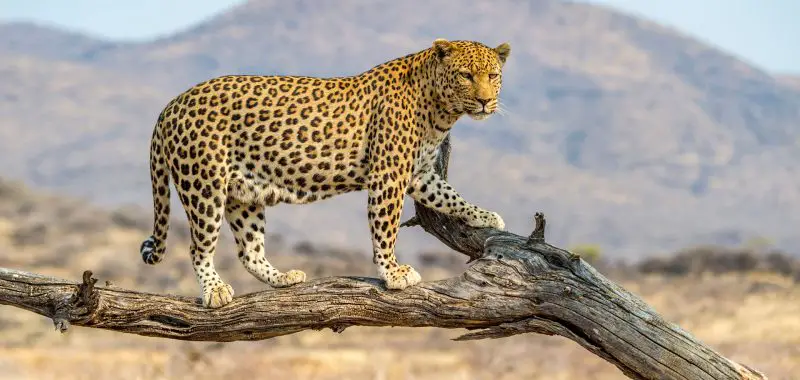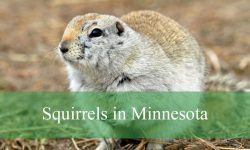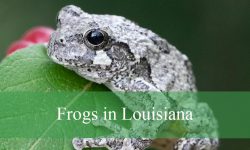The American Southwest has always been a place of mystery and fascination, with its rugged deserts, towering mountains, and wide-open skies. But among all the natural wonders of Arizona, one rumor persists in hushed tones and whispered stories—leopards. While many people dismiss such claims as myths or confusion with more common predators, there are those who swear they’ve seen the unmistakable silhouette of a leopard lurking in the brush.
This article delves deep into the roots of these sightings, separating myth from possibility and shedding light on one of the most perplexing wildlife mysteries in the American West.
The Origins of the Leopard Myth in Arizona

Before any credible discussion about leopards in Arizona can begin, it’s crucial to understand how these stories first took hold. Arizona, like many states with vast wilderness areas, is fertile ground for unusual animal sightings. The tale of the leopard in Arizona seems to have originated in the early 20th century, during a time when exotic animal trade was far less regulated than it is today.
Some historians believe that private zoos and traveling circuses, popular forms of entertainment at the time, may have inadvertently contributed to this phenomenon. Exotic animals, including leopards, were brought to small towns and remote regions for public exhibitions. Escapees from these makeshift enclosures were not unheard of, and in several cases, leopards were among those listed as missing. The possibility that a few of these animals may have adapted, at least temporarily, to the Arizona wilderness is not as far-fetched as it might seem at first glance.
Confusion with Native Species and Misidentification
In most cases, when people claim to have seen a leopard in Arizona, what they likely observed was not a leopard at all. The most probable explanation involves misidentification with native species such as the mountain lion, also known as the cougar or puma. Mountain lions are solitary, stealthy, and powerful predators with a tan to reddish-brown coat that, in poor lighting, could resemble the color and shape of a leopard to the untrained eye.
Adding to the confusion, jaguars—true big cats and relatives of the leopard—have occasionally been confirmed in the southernmost regions of Arizona. These rare sightings of wild jaguars, particularly in the Sky Islands region near the Mexico border, have been documented and studied by wildlife biologists. Though distinct from leopards, the jaguar’s spotted coat and feline gait could easily mislead a casual observer into thinking they saw a leopard.
The Role of Escaped Exotic Pets
The exotic pet trade, both legal and illegal, plays an undeniable role in the proliferation of non-native animal sightings across the United States. Arizona, with its warm climate and expansive private properties, has seen its share of individuals attempting to keep wild or exotic animals as pets. Despite state and federal regulations, there have been incidents involving escaped large cats, including leopards.
When such animals escape, they often avoid detection for weeks or even months before being captured or succumbing to the harsh realities of the wild. In a few instances, the escape of exotic felines has gone unreported, either due to the owner’s fear of legal repercussions or the assumption that the animal would not survive long. These unrecorded escapes could provide a partial explanation for reported leopard sightings, especially in more populated regions on the outskirts of Phoenix or Tucson.
Historical Leopard Sightings and Media Sensation
Over the years, local newspapers, television stations, and online forums have occasionally reported leopard sightings in Arizona. These incidents tend to follow a familiar pattern: a lone eyewitness account, perhaps supported by a blurry photo or grainy video, followed by expert skepticism and eventual public forgetfulness. But when pieced together, these individual stories form a surprisingly persistent narrative.
One such account took place in 1989 near the town of Sierra Vista. A rancher claimed to have seen a large spotted cat dragging a deer carcass into a dry arroyo. The description matched that of a leopard, not a jaguar or mountain lion. Wildlife officials searched the area but found no physical evidence. The story faded, but it remained in the memory of locals who continue to speculate about what he saw. These types of sightings, though unverified, have contributed to the mystique of leopards in Arizona and kept the conversation alive for decades.
The Science of Habitat Compatibility
If leopards were to exist in the wild in Arizona, could they survive? This question leads to an intriguing exploration of ecological compatibility. Leopards are among the most adaptable big cats on Earth. In their native ranges across Africa and Asia, they occupy a wide variety of ecosystems, from dense forests to arid savannas and even mountainous regions.
Arizona, with its patchwork of desert basins, rugged canyons, and alpine woodlands, shares environmental characteristics with some of these regions. There is access to prey, cover, water sources, and minimal human disturbance in more remote parts of the state. While the environment alone might support the survival of a leopard, long-term sustainability would require breeding populations, genetic diversity, and enough range to avoid human conflict—factors that are not currently supported by any scientific data in Arizona.
Distinction Between Leopards and Jaguars
The confusion between leopards and jaguars is so prevalent that it deserves special attention. While they are closely related, the two species differ significantly in appearance and behavior. Jaguars are bulkier, with shorter legs and a larger head relative to body size. Their spots, called rosettes, are more complex and often have a central dot inside. Leopards, in contrast, tend to be more slender with simpler rosettes.
Biologists tracking jaguar activity in Arizona often use camera traps to identify individual animals by their unique spot patterns. These high-resolution images have only ever confirmed jaguars—not leopards—in the wild. Therefore, despite numerous alleged sightings of leopards, none have been substantiated with photographic evidence comparable to the verified images of jaguars in the region.
Cultural Fascination with Big Cats in the Southwest
There’s something about big cats that captures the human imagination, especially in places like Arizona, where the land still feels wild and untamed. From Native American folklore to modern tales of mystery, felines have been woven into the cultural identity of the region. In tribal stories, large cats are often seen as spiritual beings or omens. Some traditions even describe spotted cats as symbols of stealth, power, and the unseen world.
In modern times, books, movies, and social media have amplified these stories, often blurring the line between fiction and fact. Sightings or rumors of leopards fuel local legends and provide a sense of wonder that modern life rarely offers. Whether these stories are based on truth or misperception, they tap into a primal curiosity and reverence for nature that still thrives in rural Arizona communities.
Scientific Stance on Non-Native Predators
From a biological standpoint, wildlife authorities and scientists take a firm position: there is no confirmed, sustainable population of leopards in Arizona. The Arizona Game and Fish Department has never documented any wild leopard through verified photographs, tracks, scat analysis, or necropsy. Wildlife biologists rely on empirical data, and without physical proof, they consider the leopard theory a product of rumor and misidentification.
That being said, scientists also acknowledge the limits of surveillance, especially in vast and remote areas. If a leopard were truly out there, alone and stealthy, it’s not impossible that it could evade detection for a limited time. But this would represent a short-term anomaly, not a lasting presence. With advances in trail cameras, drone surveys, and public awareness, the chances of a real leopard going unnoticed are becoming increasingly slim.
Conservation Implications and Public Perception
Interestingly, the myth of leopards in Arizona brings unexpected benefits to wildlife conservation. Stories that capture public imagination tend to raise awareness about wild habitats and the creatures that actually live there. In this case, the attention drawn by alleged leopard sightings has helped direct curiosity toward real conservation issues, such as habitat loss for mountain lions, jaguars, and bobcats.
Public perception also plays a role in funding and policy. If the idea of leopards inspires people to support wildlife corridors, restrict development in sensitive areas, or learn more about predator-prey dynamics, then these stories serve a purpose. They may not be grounded in biological fact, but they engage the public in a way that purely scientific reports rarely can.
What to Do If You Think You’ve Seen a Leopard
For those who are convinced they’ve seen a leopard in Arizona, there are steps to take that could provide valuable data. First, documenting the sighting with a clear photo or video, including landscape context for scale, is critical. Second, reporting the incident to local wildlife authorities ensures that trained professionals can investigate and rule out misidentification.
It’s important to remain cautious and respectful when encountering any large predator in the wild. Misidentifying an animal doesn’t diminish the experience—observing a mountain lion or bobcat is still rare and significant. But sharing accurate information helps both science and public awareness grow in meaningful ways.
FAQs About Leopards in Arizona
Are there really leopards in Arizona?
Scientific studies and wildlife authorities confirm there is no evidence of established leopard populations in Arizona. Most sightings are likely misidentifications or myths.
What animals are often mistaken for leopards?
The most commonly misidentified species are mountain lions (cougars), and occasionally jaguars, which have confirmed but rare presence in southern Arizona. Leopards are visually distinct but often confused in poor lighting or distance.
Have any escaped pet leopards been found in Arizona?
While incidents of escaped exotic cats have occurred, there are no verified cases of sustained survival or breeding of leopards in the wild. Escapes, if unreported, add uncertainty but not evidence of wild populations.
Can a leopard survive in Arizona’s desert and mountain habitats?
Ecologically, Arizona may offer enough cover, prey, and water for a transient leopard, but long‑term survival and genetic viability would require a breeding population—something for which there is no scientific support.
What should I do if I believe I’ve seen a leopard?
Document the sighting with clear photos or video, note details of location and time, and report to local wildlife authorities. They can help verify the species and rule out misidentification.
Final Thoughts on the Leopard Legend in Arizona
The shocking truth about leopards in Arizona is not so much that they exist in secret, but that the belief in them persists despite scientific evidence to the contrary. This belief reveals much about the human relationship with the natural world—our tendency to see what we want to see, our fascination with the unknown, and our yearning for mystery in an increasingly mapped and measured environment.
In the end, the story of leopards in Arizona may be more about us than about the animals themselves. It reminds us that nature still holds secrets, even if they aren’t the ones we expect. Whether fueled by misidentification, historical anomalies, or pure imagination, the legend continues to thrive. And as long as it does, Arizona will remain not just a land of deserts and canyons, but a place where the wild still whispers the improbable into curious ears.






